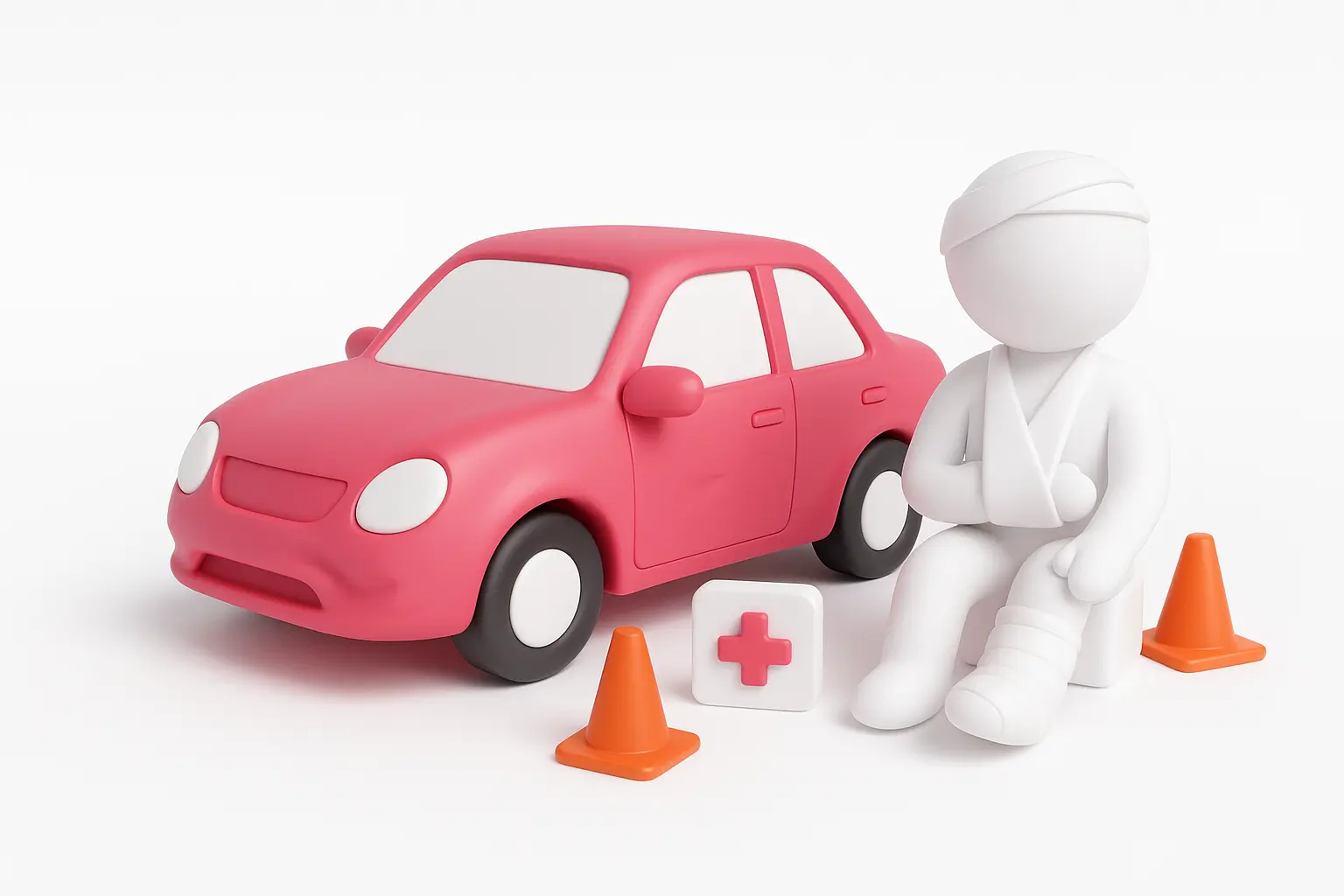The cost of brake fluid replacement ranges from $80 to $205 on average.
While a relatively simple maintenance service, maintaining clean brake fluid at the right levels is critical for the safety of your vehicle.
If the pressure levels in your brake lines drop, or your brake fluid gets contaminated with dirt or moisture, it could prevent your car’s brakes from working correctly.
Factors that influence brake fluid replacement costs
Though brake fluid is on the more affordable side of car-maintenance expenses, understanding the variables that cause the service to cost more or less can help you avoid surprises at the shop. It mostly comes down to what your car needs and who’s doing the service.
Type of brake fluid
There are four primary types of brake fluid — DOT 3, DOT 4, DOT 5 and DOT 5.1— each designed for different brake system requirements and driving conditions. Higher-grade fluid costs more to replace than low-grade fluid.
Each type of brake fluid is composed of a combination of solvents, lubricating agents and additives like antioxidants and corrosion inhibitors. However, DOTs 3, 4 and 5.1 are silicon-based while DOT 5 is glycol-based, making it more suited for colder climates and military vehicles.
To determine which type of brake fluid your vehicle needs, you can look at the Department of Transportation (DOT) number etched into your brake fluid reservoir cap.
You can only mix brake fluid types if you go up to a higher grade option — DOT 3 with DOT 4 or 5.1 and DOT 4 with DOT 5.1 — and you can’t mix DOT 5 with any other types of brake fluid.
Vehicle type
The more complex a car repair is, the longer you can expect it to take and more you’ll probably pay. Luxury vehicles and those with complex or high-performance brake systems often require a more complicated fluid flush process than a car with a simple brake system.
Shop type
With some exceptions, vehicle repairs and mechanical services tend to cost more at dealerships than independent shops. You may also pay more on average for things like brake fluid replacement if you live in an urban area than a rural one.
What is brake fluid replacement?
Over time, brake fluid can absorb moisture, leak out of the lines and gum up with contamination, reducing brake performance and making your car less safe on the road.
A brake fluid replacement, also known as a brake fluid flush, is the process of draining any existing brake fluid from your vehicle’s lines and replacing it with fresh fluid.
The service can include:
- Draining the old brake fluid from your brake lines.
- Cleaning and flushing the system.
- Adding new brake fluid.
- Bleeding out any air that may have gotten into the brake lines.
Most mechanics also use this opportunity to visually inspect the brake lines for any leaks or areas where moisture and contaminants could get into your brake system.
Brake fluid is a type of hydraulic fluid and one of the most crucial components of your braking system. It’s responsible for transferring pressure from the brake pedal inside your car to the components at each wheel, helping you stop your car on demand. What’s special about brake fluid is that it is non-compressable so it gives immediate and consistent braking pressure.
It also acts as a lubricant for the various parts of your brake system, keeping them moving smoothly and efficiently.
How often should you get brake fluid replacement?
Some carmakers will include a brake fluid replacement in their owner’s manual under regularly scheduled maintenance. If so, follow those guidelines. For example, Subaru calls for brake fluid flushes every 30,000 miles or three years. Otherwise, mechanics generally say brake fluid replacement should be done every 30,000 to 45,000 miles, on average, or anytime you notice a change in your brake fluid or brake performance.
Many drivers choose to flush their brake fluid each time they install new brake pads or shoes on their vehicle, which can also save you money on labor.
Bad brake fluid can cause bigger problems with your calipers, brakes and other vehicle components. Fluid that’s full of contaminants — or low brake fluid pressure — might prevent your car from stopping when you need it to. You can buy a cheap test strip online that detects moisture or copper in the fluid and lets you know if the fluid has gone bad or has water in it.
If you notice any of the following, it may be time for a brake fluid replacement:
- A soft or “spongy” brake pedal.
- Reduced braking response.
- New or strange brake noises.
- Fluid leaks.
- Dark or murky brake fluid in the reservoir.
Your dashboard’s ABS or brake warning light may come on if there’s a problem with your brake fluid or system.
How to save on brake fluid replacement
While there isn’t much room to cut corners on brake fluid replacement costs, it’s still wise to get multiple estimates and ask your mechanic about coupons and discounts.
Bundle with other services
Many shops offer brake fluid line flushes as part of bigger services, such as regularly scheduled maintenance. If you take your car in for a 60,000-mile service, for example, a brake flush might be included as one of the many discounted services in your package.
You might also be able to save on brake fluid replacement when you have related services done, like brake pad replacement, caliper repair or a full brake service. Since the mechanic will already be working on your brake system, adding a flush may reduce your labor costs.
Look for discounts
Dealerships and repair shops can offer discounts or promotional pricing for services like brake fluid replacement. Shop online, call around and look for coupons or ads in local publications to see how you might save on this service.
If you’re an active-duty military member or teacher, for instance, you could qualify for additional discounts through dealerships or local shops.
Get quotes from multiple repair shops
You can save money on any repair services, including brake fluid replacement, by shopping around before choosing a service provider.
Once you know that you need to replace your brake fluid, call around and get quotes from multiple shops to compare prices and ask about any available coupons or discounts.
FAQs
-
What if I replace my brake fluid with a lower-grade fluid?
-
Is $100 too much for a brake fluid replacement?
-
Can I replace my own brake fluid?

Stephanie Colestock is a professional writer, CFEI®, and licensed insurance agent specializing in personal finance. With over 14 years of experience, she crafts insightful and accessible content on a wide range of financial topics, including insurance, loans, credit/debt, investing, retirement planning, and banking.
Her bylines appear in top-tier publications such as TIME, Fortune, MSN, Business Insider, USA Today, Money, Fox Business, and CBS. Stephanie’s deep understanding of complex financial concepts and her ability to communicate them clearly have made her a trusted voice in the industry.
When she’s not writing, Stephanie enjoys SCUBA diving, reading a good book, and traveling the world with her family.

Annie is a writer and editor at Jerry with more than a decade of experience writing and editing digital content. Before joining Jerry, she was an assistant assigning editor at NerdWallet. Her past work has appeared in the Associated Press, USA Today and The Washington Post. Her work has been cited by Northwestern University and Harvard Kennedy School. Annie served as a spokesperson for NerdWallet during her time at NerdWallet and has been featured in New York Magazine, MarketWatch and on local television and radio stations.
Previously, she worked at USAA and newspapers in Minnesota, North Dakota, California and Texas. She has a bachelor’s degree in journalism from the University of Minnesota.

Phil grew up fixing lawn mowers, motorcycles and cars. He began his journalism career as a night police reporter in Chicago and Denver. Moving to Los Angeles, Phil ghost-wrote several how-to books about car buying. He then was hired by the consumer automotive site Edmunds.com where he worked as an “undercover” car salesman. This led to a series of articles called “Confessions of a Car Salesman.” Additionally, he wrote DIY articles about car maintenance and repair and took high-performance driving lessons on race tracks in Nevada and California. Later, he wrote a syndicated automotive column for Nerdwallet. He recently he authored the book Electric Cars: How to Get Rolling Today. For Jerry he will use his experience to help car owners make smart decisions about driving, repairing and maintaining their vehicles. Phil lives in Long Beach, Calif., and still enjoys turning wrenches and helping his son change the oil in his 2016 Mazda3.









